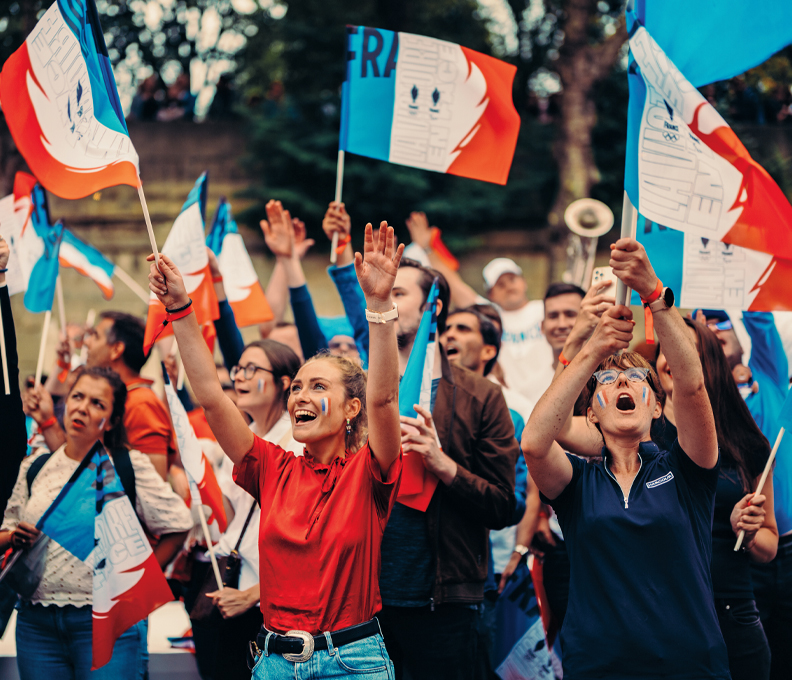Airlines Partner with Top Brands for Passenger Perks
Luxury amenity kits, airport spa treatments, and other comforts elevate the passenger experience
May 10, 2023
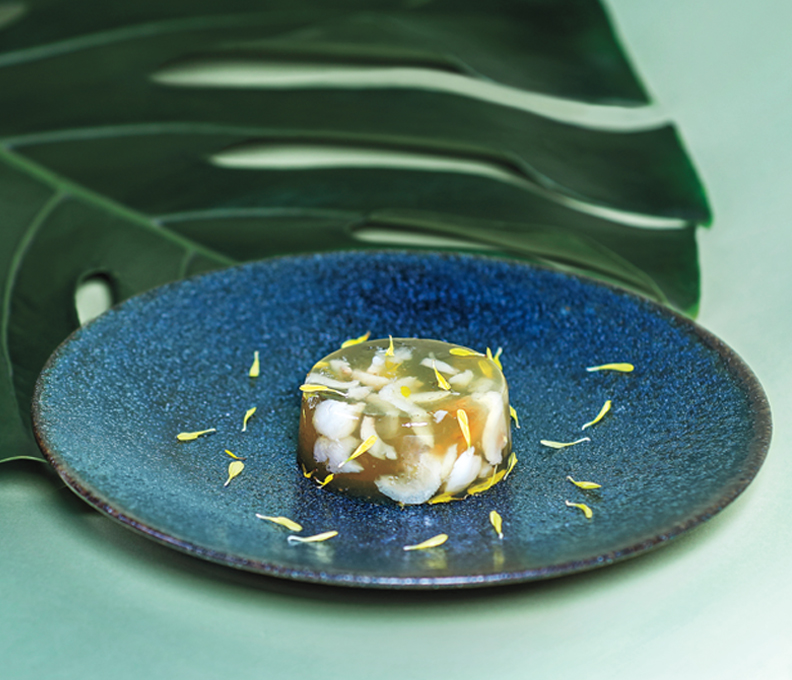
Cathay Pacific has partnered with the Michelin-starred Duddell’s restaurant in Hong Kong to offer guests dishes such as chrysanthemum and longan jelly / Photo: Courtesy of Cathay Pacific
Airline budgets are understandably top-heavy on fuel, staffing, maintenance and aircraft. But they also spend a lot of money on strategically chosen partnerships that enhance the passenger experience. Typically, this type of investment is something that full-service airlines concentrate on as they tend to have larger marketing budgets or focus more on premium amenities.
Today, there are quite a few affiliations between airlines and some of the world’s top brand names. Here’s how you can travel in the lap of luxury and sample what’s behind those storefront designer windows, even at 35,000 feet.
In the air
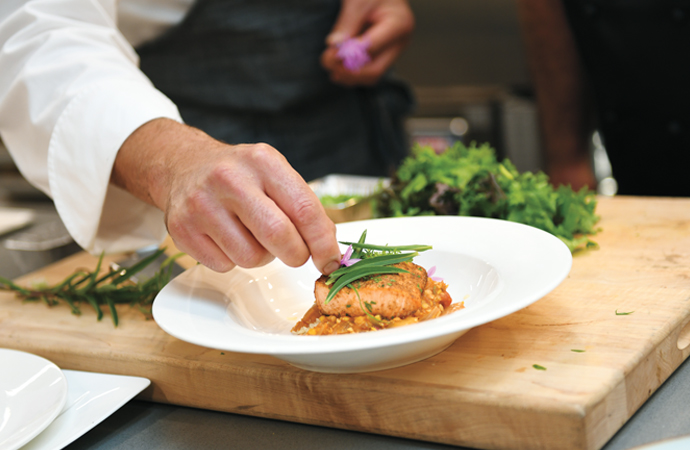
Singapore Airlines sends its chefs to the Golden Door spa in California to learn from the wellness retreat’s culinary team / Photo: Courtesy of Singapore Airlines
One of the fastest ways to win over passengers is through the stomach. Airlines know this well, and they invest substantially in partnerships with notable chefs and brands.
Singapore Airlines sends its chefs to the world-famous Golden Door spa in California to learn from the wellness retreat’s culinary team. They help farm vegetables and sample flavors to see what works best at altitude while also focusing on wellness and nutrition, which is imperative since the carrier operates some of the longest flights in the world. And American Airlines’ stylish new lounges in New York and premium cabin onboard menus were designed in partnership with the James Beard Foundation.
Both partnerships demonstrate how airlines are tapping into the latest trends of locally sourced, healthy food that also appeals to consumers. In addition, working with emerging chefs and supporting local and organic producers shows that airlines are aware of what people care about today.
“Consumers are increasingly supporting brands that focus on improving our world,” says Kris Moon, chief operating officer of the James Beard Foundation. “Joining forces with American allows us to bring our Good Food for Good mission to the skies while also helping consumers enjoy the deliciousness of our food world.”
In addition to great food, the organization focuses on educating and empowering those in the industry. Along with sustainable food sourcing, it operates leadership programs for women that help to close the gender gap in the culinary world.
It’s also about entertaining travelers above the clouds with more than just movies. Those traveling at the front of the plane are accustomed to great restaurants, and to truly impress, airlines have to feature recipes from the best. Air France’s work with a cadre of Michelin-recognized chefs assures that its First and Business Class meals demonstrate restaurant quality and creativity.
For example, triple-Michelin-starred chef Arnaud Lallement chose French Sturia caviar and smoked haddock as an appetizer for the La Première menu, while his lobster dish is an homage to his father. Fabien Pelous, Air France’s senior vice president of customer experience, says, “It is a great source of pride for everyone at Air France to offer culinary delights by 17 renowned French chefs throughout the year.”
According to Pelous, it’s an excellent way to showcase various French regions and products while letting the chefs share their history and emotions with customers. It allows Air France to “put French expertise in the spotlight.”
Other airlines that work with notable chefs include Cathay Pacific and Qatar Airways. Cathay’s newest partnership is with Duddell’s, the Michelin-starred restaurant in Hong Kong. Qatar Airways’ collaboration with the nation’s Ministry of Culture means it is now loading dishes from chef Aisha Al Tamimi.
When an airline delivers a premium product that pleases clients, it also gives staff the chance to feel extra pride in their job. United Airlines invested a lot of money in a partnership with the Italian coffee brand Illy, which helped train flight crew to brew the perfect pot. According to the airline, it chose the brand based on customer feedback and because its employees were proud to serve it.
It’s not just the food but also the dinnerware it is served on that is meant to impress. Designer flatware and plates are other opportunities for making in-the-know travelers feel pampered. Etihad Airways just rolled out a vast partnership with Armani/Casa, with the brand overseeing everything from the plates, cutlery and wine glasses to duvets and pillowcases.
Airlines also act as extensions of their national culture and brands. For those with global route networks, it makes sense to introduce connecting passengers from abroad with the very best so that they will want to visit on their next trip.
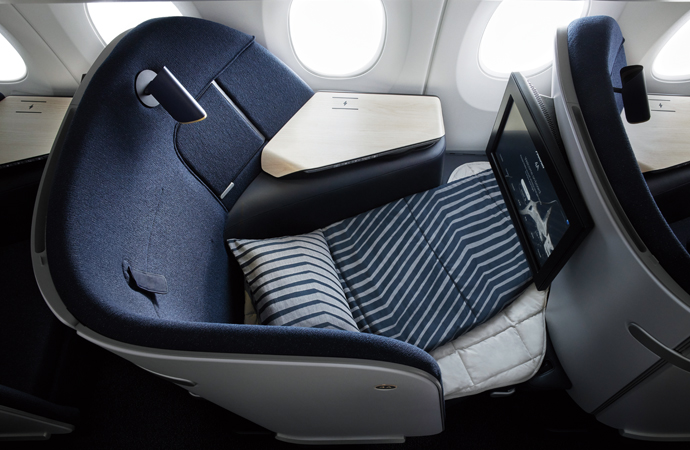
Finnair partners with Marimekko to produce service ware, pillowcases and blankets / Photo: Courtesy of Finnair
For example, Finnair works with Marimekko, the Finnish design brand, to produce service ware, pillowcases and blankets. Marimekko has even designed special aircraft liveries for the airline. As a product extension, customers can purchase Marimekko products in local airports. Finland is known for its design culture, and the airline’s offering goes hand in hand with that.
Meanwhile, KLM has for years looked to Dutch designer Marcel Wanders for its Business Class plates and service ware. Even the meal trays have Wanders’ signature hallmarks, so passengers can enjoy both Dutch cuisine and Dutch design when they fly.
In-flight goodies
Brand names are also well represented in premium cabin amenities. Travelers have come to expect them when they fly, and while some may not choose an airline based on the in-flight perks, they undoubtedly will remember them, perhaps even taking them home as souvenirs of their flight experience.
United’s recent partnership with luggage brand Away is a perfect example. Popular with frequent fliers, the hard-shell suitcases now come in miniature form as the airline’s Sunday Riley-stocked amenity kits for Polaris Business Class on long-haul international flights and a sports pouch version for premium economy on long-haul international flights. Luc Bondar, United’s vice president of marketing and loyalty and president of MileagePlus, explains why airlines look for like-minded brands: “Travelers are seeking comfort and quality now more than ever when they fly—that’s why we chose to partner with Away.”
It’s a brand that resonates with customers. They choose it for personal use, and there is a greater connection with the airline when shared interests align.
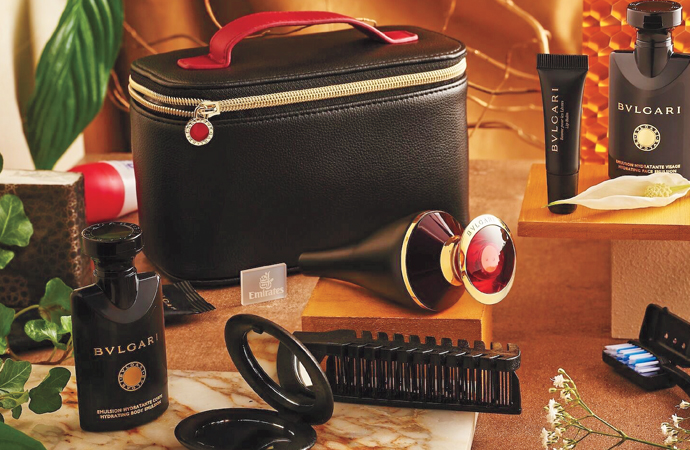
Emirates turned to Bulgari and Byredo for its amenity kits and in-flight products; Finnair partners with Marimekko to produce service ware, pillowcases and blankets / Photo: Courtesy of Emirates Airlines
Emirates turned to Bulgari and Byredo for its amenity kits and in-flight wellness products, and audio brand Bowers & Wilkins for its noise-canceling headphones. Sri Lankan Airlines uses Aigner in its amenity kits, while Delta has turned to Australia-based Grown Alchemist for its onboard toiletries and Delta One amenity kits.
In the same way airlines lean into locally sourced in-flight cuisine options, Delta’s amenity kits strongly focus on sustainability and community support efforts. Made by Mexico-based brand Someone Somewhere, the fabric amenity kits are handwoven by local artisans, 75 percent of whom are women. In addition, the bags are produced in regions where jobs are particularly vulnerable. Passengers can even meet or send a message to the person who made the kit by scanning a QR code.
Delta sees this type of feel-good partnership as something its consumers appreciate. “At Delta, we’re challenging ourselves to put ever more thought and care into how and where we source our products,” says Sam Sibble, the airline’s director of supply chain management. “Partnerships like this align with our vision of providing a premium and unique onboard experience while also creating social, economic and environmental impact.”
And if airlines are trying to match substantial airfare with a premium product, the partnerships they choose can be key. Air Canada rolled out new amenity kits from Acqua di Parma worth stuffing into your carry-on bag to take home. Penhaligon’s toiletries stock the amenity kits in Singapore Airlines’ Business Class. In-flight sleepwear is available on some of the toniest airlines, like Qatar’s Business Class, which partnered with The White Company, and EVA Air uses designer outfits from Jason Wu. All of these show a commitment to appealing to consumers with brands they enjoy.
Pillows, blankets, mattress pads and sleepwear aboard American Airlines’ longest flights now come from Casper, a U.S.-based mattress and sleep company with a growing cult-like following. In First Class, British Airways uses loungewear from Temperley London.
Even the leather that airlines use for seats demonstrates attention to detail. Singapore Airlines turned to Poltrona Frau for its newest First and Business Class seats on the A380, while its First Class bedding, sleepwear and amenity kits are from Lalique.
United Polaris cabins use blankets and pillows from Saks Fifth Avenue—so popular that the carrier had to add language on its printed menus that the sleep items were not to take home and must remain onboard. Sometimes, marketing efforts work a little too well!
On the ground
Airline staff uniforms are another area where designer partnerships can have tremendous value. Just like with the onboard product offered to passengers, when staff feels proud of what they are wearing, they are better positioned to deliver a higher level of service.
Air France uses Christian Lacroix uniforms now, but in the past has partnered with other famous names such as Christian Dior, Balenciaga, Nina Ricci and Pierre Cardin. Meanwhile, the late Vivienne Westwood outfitted Virgin Atlantic’s staff, and Parisian designer Pierre Balmain’s notable sarong kebaya of Asian batik has become a signature of Singapore Airlines flight attendants.
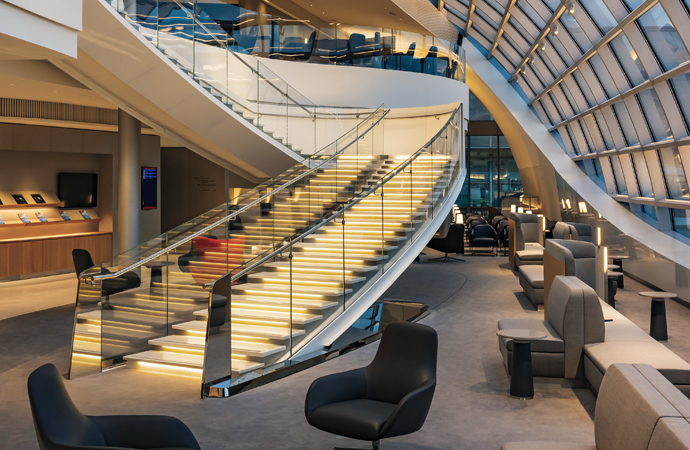
Air France lounges incorporate partnerships with such brands as skincare line Clarins / Photo: Courtesy of Jerome Galland
Custom-designed furniture from Poltrona Frau fills the flagship lounges for ITA Airways as well as Cathay Pacific lounges in Hong Kong. Some lounges even offer complimentary spa treatments. At Air France lounges in Paris and New York-JFK, customers can choose from a selection of three face treatments from Clarins.
Partnership experiences in lounges can help drive airline revenue, and brands finding new customers can make it a win-win for both. This strategy also elevates an airline’s standing in the mind of consumers. For example, Taiwan’s Starlux has been taking a novel approach, creating its own marketplace of goods with physical stores. If successful, when consumers think of the airline, they will immediately see it as a high-end name.
And it’s not just inside airplanes and airports where passengers benefit—it’s also outside and on the ground. For instance, Delta has long partnered with Porsche, using its vehicles to transport elite-status passengers between tight connections. United has a similar program with Jaguar, which offers the first all-electric vehicle fleet for gate-to-gate airport transfers. These programs are popular with auto manufacturers because they expose their products to a potential new set of customers.
“We are excited for travelers to have the opportunity to experience these innovations on the tarmac,” says Joe Eberhardt, president and CEO of Jaguar Land Rover. And if an airline’s investments don’t strike you as impressive, how about these global airports that put an emphasis on the guest experience through art and design?

Doha Hamad International Airport showcases Lamp/Bear by artist Urs Fischer in its central terminal / Photo: Courtesy of Amer Sweidan/Qatar Airways
Doha Hamad International Airport showcases the Insta-favorite yellow Lamp/Bear by Swiss artist Urs Fischer, as well as nearly a dozen other large-scale works. In Amsterdam, the Schiphol Airport houses a branch of the Rijksmuseum, with rotating works from Dutch masters. The National Museum of Korea has loaned many unique pieces to Seoul Incheon International Airport, and Orlando offers a unique multimedia experience at its new Terminal C, revealing impressive digital canvases within distinct architectural structures created by Gentilhomme Studio with Sardi Design. You may even want to arrive at the terminal earlier for a little cultural immersion.


